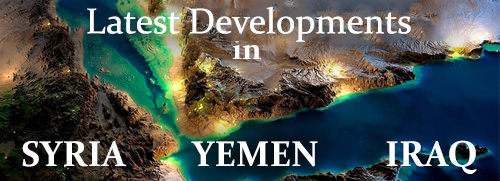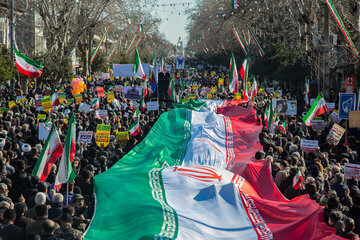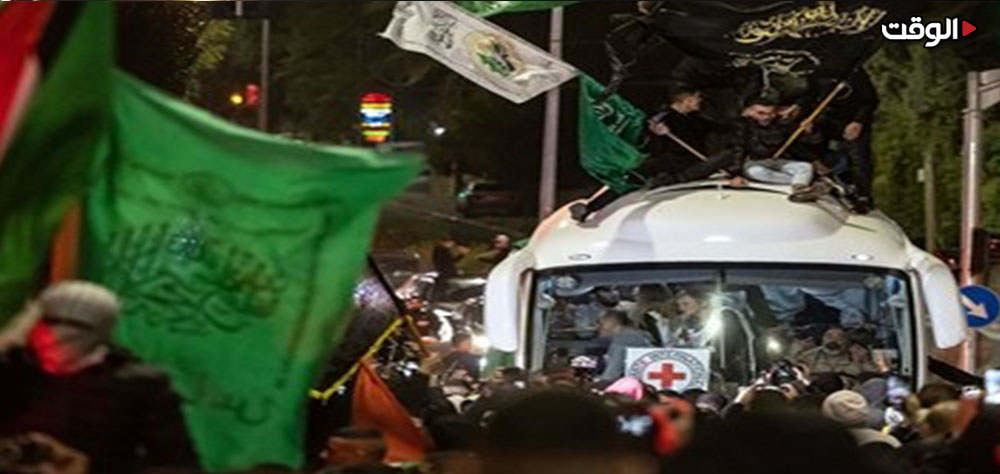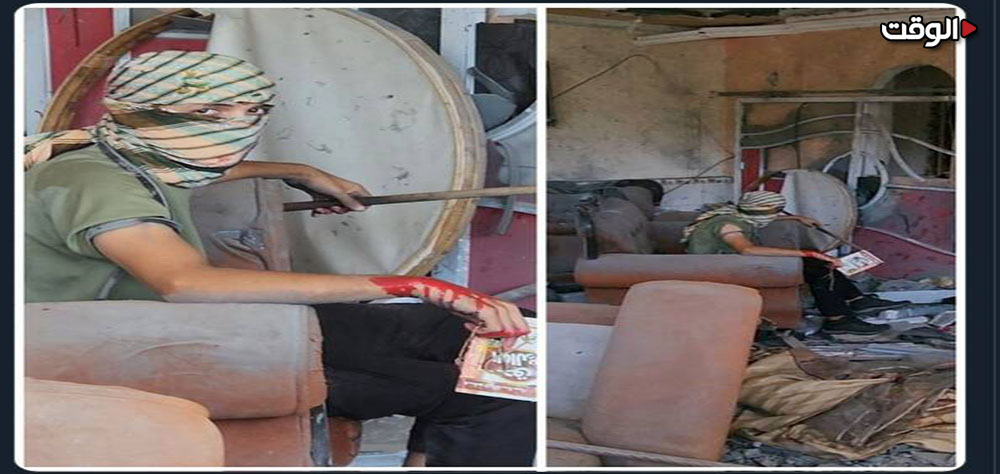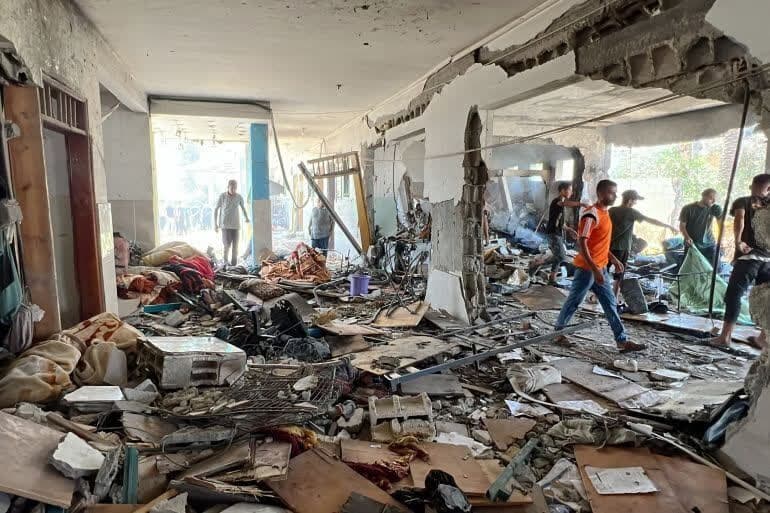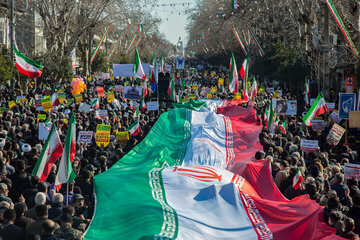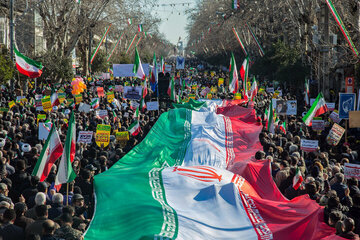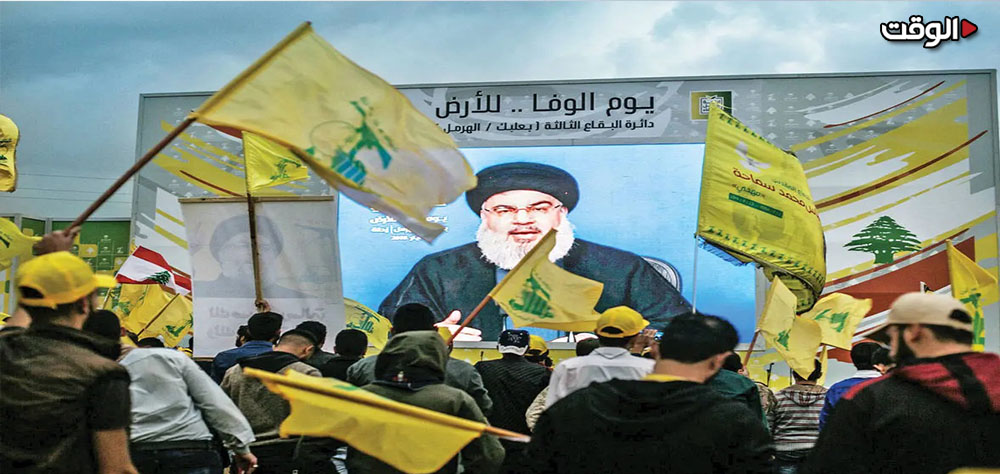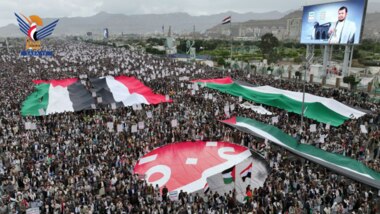Alwaght- A while ago, 250 terrorists in black clothes carried out an attack on Badakhshan province and killed some security forces. They seized more than twenty Afghan police stations. In addition, there has recently been some clashes between insurgents and security forces in different parts of Kunduz province which led to displacement of more than ten thousand families. As Abdul Rahoof Ebrahimi, head of the Afghan parliament said, the northern Afghanistan is as insecure as Pakistan North Waziristan. Meanwhile, apart from the Taliban spring offensives in Afghanistan, the provinces in North and North East have experienced much stronger presence of foreign fighters compared to last years. As in Badakhshan, thousands of Chechen, Uzbek, Tajik and local Taliban fighters have established bases, and in other northern provinces of Afghanistan, especially Faryab, Sar-e Pol, Kunduz, Jawzjan, and Samangan, some important parts were on the verge of being taken over. This article deals with the causes of current insecurities in northern Afghanistan.
Taliban spring offensive
Over the past decades, Taliban insurgents have always adopted different methods and means to extend the battlefield from mainly southern and eastern provinces into other provinces. Secure provinces of the north, central and west Afghanistan seemed suitable for the purposes of the Taliban.
The presence of foreign extremist groups
Northern Afghanistan bordering Central Asia mainly includes six provinces of Badakhshan, Takhar, Kunduz, Balkh, Jowzjan, Faryab, and Badghis. Compared to other provinces, these provinces generally enjoyed higher relative security. However, in recent months there has been an increased insecurity. It is noteworthy that some foreign groups are involved in the spread of insecurity in northern Afghanistan. In addition, the dissident groups, and some countries in the region make attempts to disturb the security of the areas. Previously, there were some concerns for insecurity in the South and East of Afghanistan, but it appears that the insecurity is just spreading over northern Afghanistan. This occurs due to direct and indirect causes. This is partially due to Pakistan’s military operations in Waziristan which have forced foreign insurgents such as Tehreek-e-Taliban Pakistan (TTP), "Lashkar-e Taiba" and "Islamic Movement of Uzbekistan" flee to Afghanistan, and move from Zabul to Badakhshan and try to get to the north. As groups like Tehreek-e-Islami Uzbekistan, Chechen fighters, Arab and Tajik terrorist groups, and even some European and American fundamentalists are found in the region. As a result of extensive Pakistani military operations in North Waziristan, a large number of Extremist groups have fled to Central Asian countries and have deployed in northern Afghanistan. From this perspective, even ISIS-related forces have arrived in the northern provinces of Faryab, Jawzjan, Sar-e Pol, and Badakhshan. Atta Mohammad Noor, Balkh governor and chief executive of the Jamiat-e Islami Party, reported that currently hundreds of multinational Asian fighters and families live in Badakhshan and other northern regions of Afghanistan. Given the proximity of northern Afghanistan to the Central Asian countries, insecurity in northern Afghanistan is due to a broad range of strategies of the West and the United States against Russia. In other words, resorting to ISIS and other Extremist groups, the Western and Arab countries seek to make Russia weak and insecure as one of their priorities. Pakistan and Afghanistan are the best way to supply Russia's opposition towards Central Asia. For Russia, the insecurity in Central Asia means insecurity in Russia. Mohammad Hanif Atmar, the Afghan president's national security adviser has said that ISIS wants to spread its terrorist activities through Afghanistan to Central Asia and its neighboring countries. Noor, the governor of Balkh province, said there is a strategic plan underway to let the ISIS penetrate Central Asian countries through northern Afghanistan. Meanwhile, countries like Russia and Tajikistan have expressed their growing concern about insecurities in northern Afghanistan.
Domestic disputes in Afghanistan National Unity government
Poverty, economic and human backwardness have made way for development of terrorism. Not implementing the government-nation building process in the country and to enhance the spirit of ethnicity have accelerated getting some areas out of government control and bringing them under terrorist groups’ control which expand the scope of their activities. The dissatisfaction with economic and social policy of the government has led to frustration of people in such areas and even assisting the anti-government Extremist groups. Furthermore, the social structure and cultural conformity of some northern cities such as Kunduz, and Wahhabi approach through religious schools in Kunduz province, one of the main origins of Hekmatyar's Islamic Party, have all paved the way for extremism. It should be noted that disputes and disagreements between the president and chief executive of the national unity government of Afghanistan and their teams are among the other causes of the increased insecurity. As there are still some challenges for electing the Ministry of Defense and the head of National Army headquarters. We may conclude that current insecurity is correlated to political situation in the country, and extremist groups, internal and external enemies take a great advantage of this opportunity.
The role of Pakistan
Many Afghan officials believe that armed groups from Central Asia are active only in the border areas; therefore, some Pakistani groups are recently entering the region to create insecurity in these areas. In this view, Pakistanis consider the northern Afghanistan as the center for opposition against the Taliban thoughts. Even in the past, the Taliban insurgents have suffered the highest number of casualties in these areas, so they try to make this area insecure.
ISIS and foreign players
Financial support of Arab countries (Arab countries in south of the Persian Gulf especially the Saudis) has expanded the influence of militias and ISIS in southern Afghanistan. Meanwhile, Wahhabi Arabs consider none-Pashtuns (both Shia and Sunni) as anti-Wahhabism, and that is why they have focused on the north, and there is higher insecurity in the region.
- Deeper Crisis: Netanyahu Declaring War on State Institutions
- Signs of Failure of Newest US Aggression on Yemen
- Leader: Israeli Regime Is a Proxy Force and Must Be Eliminated
- Iran Prepared Missiles for A Possible Response Following US Threats
- Iraq’s PMF in Trump’s Game with Iran
- President: Iran Remains Open to Indirect Talks with US
- Yemeni Army Hits Israel’s Ben Gurion Airport After Targeting US Aircraft Carrier
- Israeli Warplanes Strike Two Buildings in Southern Lebanon, Violating Ceasefire
- FM Araghchi Sends Eid al-Fitr Greetings to Muslim Countries
- Iran Extends Condolences to Myanmar and Thailand Following the Deadly Earthquake
Editor's Choice
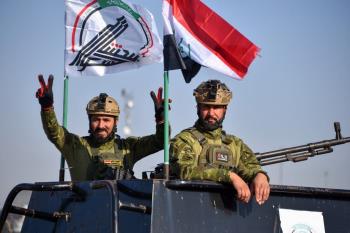
Iraq’s PMF in Trump’s Game with Iran Trump set dissolution of Iraq’s PMF as a precondition for talks with Iran, but the fact is that this voluntary force is deep-rooted in Iraq.
Erdogan’s Nightmare: What Can Arrest of Opposition Leader Bring to Turkey? Erdogan is walking on the brinks by arresting the Istanbul mayor and this can cost national economy and him dearly.
Heavy American Bombing: Will Yemen Back Down from Pro-Palestinian Support? The US is striking the Yemenis to build protection for Israel, but the Yemenis are already battleground-tested and retreat is not in their vocabulary.
As Ansarullah Deadline Ends, Yemen Nightmare Returns to Israelis Ansarullah of Yemen resumes ban on Israeli ships and ports as Israeli government evades Gaza ceasefire and seeks occupation.
Syria Neighbors Meeting: A Display of Sense of Danger Combined with Distrust Neighbors of Syria convened in Amman to discuss Syria, but their division of views and concerns was obvious.
News
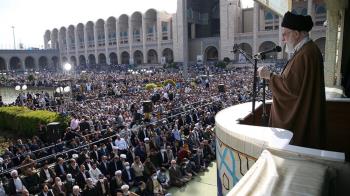
Leader: Israeli Regime Is a Proxy Force and Must Be Eliminated
Ayatollah Seyyed Ali Khamenei, Leader of the Islamic Revolution, stated that the Zionist regime is the region’s sole proxy forceIran Prepared Missiles for A Possible Response Following US Threats Iran’s armed forces have prepared missiles capable of targeting US-linked positions amid ongoing military threats from President Donald Trump
President: Iran Remains Open to Indirect Talks with US Iranian President Masoud Pezeshkian stated that Iran remains open to indirect negotiations as a viable option
Yemeni Army Hits Israel’s Ben Gurion Airport After Targeting US Aircraft Carrier The Yemeni army claims to have successfully struck Ben Gurion Airport in Israeli-occupied Yafa in solidarity with Palestine
Israeli Warplanes Strike Two Buildings in Southern Lebanon, Violating Ceasefire Israeli warplanes have bombed two buildings in southern Lebanon, further violating the fragile ceasefire with the Arab nation
FM Araghchi Sends Eid al-Fitr Greetings to Muslim Countries Foreign Minister Abbas Araghchi has conveyed his Eid al-Fitr greetings to the Iranian people and Muslim nations
Iran Extends Condolences to Myanmar and Thailand Following the Deadly Earthquake Iran has expressed condolences to Myanmar and Thailand after a devastating 7.7 magnitude earthquake struck both countries
Ansarullah Warns of Missile Strikes On Abu Dhabi And Dubai The Yemeni Ansarullah movement has strongly warned the UAE over its suspected intelligence and operational cooperation with the US in attacks on Yemen
Iran To Launch Operation True Promise III Against Israel A senior military advisor to Ayatollah Seyyed Ali Khamenei reiterates Iran’s unwavering commitment to launching Operation True Promise III
UK Police Arrest 9, Including 6 Young Women, Over Gaza Genocide Meeting UK police detained nine individuals, including six young women, for organizing a meeting on the ongoing genocide in Gaza
Hamas Condemns Israeli Strike on Rafah Civil Defense Teams As ‘War Crime’ The Palestinian Hamas resistance movement has strongly denounced the Israeli military’s attacks on Palestinian Civil Defense teams and paramedics
Iran Is Prepared to Confront Any Threats from Foreign Powers IRGC Navy Commander Alireza Tangsiri affirmed that Iran will defend its rights and interests against any threats
Yemeni Forces Battle US Warships for Hours, Strike Israeli Targets Near Tel Aviv Yemen’s Armed Forces battled US warships in the Red Sea for hours and launched drone strikes on Israeli military sites near Tel Aviv
Yemen’s Deadliest Week: US-Led Strikes Kill 25 Civilians US-led airstrikes in Yemen have killed at least 25 civilians over the past week
Hamas: Netanyahu Fully Responsible for Gaza Ceasefire Failure Hamas states that Israeli Prime Minister Benjamin Netanyahu is fully responsible for the ceasefire collapse after his decision to resume aggression in Gaza
Iran Calls on Syrian Interim Authorities to Address Civilian Mass Killings Iran has urged Syrian interim authorities to take firm action against the mass killings of civilians in Latakia and Tartus
Iran Unveils ‘Missile Megacity,’ Boasts of Stronger ‘Iron Fist’ Iran’s IRGC Aerospace Division has revealed a new “missile megacity,” one of its many such facilities
Erdogan Dreams of Hijacking Nowruz The Turkish leader described the ancient Persian eve as Turkish and a point of unity of Turkic nations.
Israel Carries Out Fresh Attacks on Syrian Bases Despite EU Caution On Tuesday, the Israeli army announced it had once again targeted two military bases in central Syria
Trump Plans to Reduce Foreign Aid Spending by $2.5 Billion US President Donald Trump plans to cut nearly $3 billion in previously allocated emergency budget funds, including $2.5 billion designated for foreign aid
Most Viewed
Iran To Launch Operation True Promise III Against Israel
Millions of Muslims Voice Support to Palestine on Quds Day
President: Iran Remains Open to Indirect Talks with US
Iran Prepared Missiles for A Possible Response Following US Threats
Israeli Warplanes Strike Two Buildings in Southern Lebanon, Violating Ceasefire
Yemeni Army Hits Israel’s Ben Gurion Airport After Targeting US Aircraft Carrier
FM Araghchi Sends Eid al-Fitr Greetings to Muslim Countries
UK Police Arrest 9, Including 6 Young Women, Over Gaza Genocide Meeting
Deeper Crisis: Netanyahu Declaring War on State Institutions
Ansarullah Warns of Missile Strikes On Abu Dhabi And Dubai
Iran Is Prepared to Confront Any Threats from Foreign Powers
Syria’s HTS Fate Dim amid Turkey Unrest
Hamas Condemns Israeli Strike on Rafah Civil Defense Teams As ‘War Crime’
Leader: Israeli Regime Is a Proxy Force and Must Be Eliminated
Signs of Failure of Newest US Aggression on Yemen
Iran Condemns US for Endangering Iraqi People by Revoking Sanctions Waiver
Ukraine and the US Hold Crucial Meeting in Saudi Arabia
HTS Militants from Syria Enter Lebanese Town and Loot Homes
Iran Denounces Deadly Attacks on Minority Groups in Syria
Iran Denounces the Lethal US Attack on Yemen
Second Round of Gaza Ceasefire Talks: Peace or New Stalemate?
Iran Refuses to Yield to Western Pressure: Nuclear Official
Iran and UAE Foreign Ministers Express Concern Over Worsening Regional Situation
President Pledges Strong Iranian Retaliation Against Threats
North Korea Vows Tough Response to US-South Korea Drills
Russia Downs 337 Ukrainian Drones Across 10 Regions
Iran-China-Russia: The Emerging Pole of Naval Power
Iran Prepared Missiles for A Possible Response Following US Threats
Ayatollah Khamenei: Iran Will Firmly Reject Pressure from Dominant Powers to Hold Talks
Syria Neighbors Meeting: A Display of Sense of Danger Combined with Distrust
In Focus
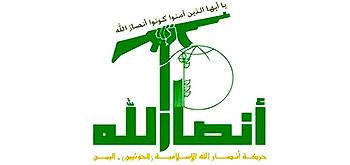
Ansarullah
A Zaidi Shiite movement operating in Yemen. It seeks to establish a democratic government in Yemen.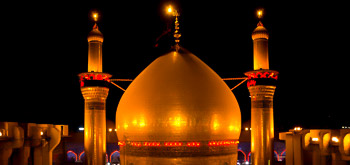
Shiite
represents the second largest denomination of Islam. Shiites believe Ali (peace be upon him) to be prophet"s successor in the Caliphate.
Resistance
Axis of Resistances refers to countries and movements with common political goal, i.e., resisting against Zionist regime, America and other western powers. Iran, Syria, Hezbollah in Lebanon, and Hamas in Palestine are considered as the Axis of Resistance.
Persian Gulf Cooperation Council
A regional political u n i o n consisting of Arab states of the Persian Gulf, except for Iraq.
Taliban
Taliban is a Sunni fundamentalist movement in Afghanistan. It was founded by Mohammed Omar in 1994.
Wahhabism & Extremism
Wahhabism is an extremist pseudo-Sunni movement, which labels non-Wahhabi Muslims as apostates thus paving the way for their bloodshed.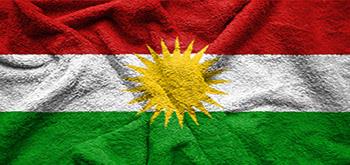
Kurds
Kurds are an ethnic group in the Middle East, mostly inhabiting a region, which spans adjacent parts of Iran, Iraq, Syria, and Turkey. They are an Iranian people and speak the Kurdish languages, which form a subgroup of the Northwestern Iranian branch of Iranian languages.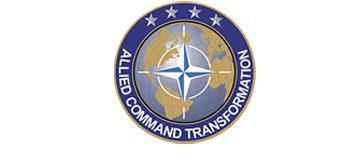
NATO
The North Atlantic Treaty Organization is an intergovernmental military alliance based on the North Atlantic Treaty which was signed on 4 April 1949.
Islamic Awakening
Refers to a revival of the Islam throughout the world, that began in 1979 by Iranian Revolution that established an Islamic republic.
Al-Qaeda
A militant Sunni organization founded by Osama bin Laden at some point between 1988 and 1989
New node
